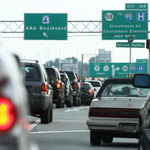

Facebook Twitter Flickr YouTube RSS Feed
Written on: February 5th, 2013 in Archaeology Updates US301
At the end of every archaeological field project comes a long list of chores: the site has to be cleaned up and backfilled, the artifacts all have to be packed up and delivered to the lab, the photographs downloaded from the camera, the photo log digitized, the equipment cleaned and stored. For the 301 project there are other tasks to be done, such as taking these final photos and measuring the archaeological area so the farmer can be compensated for the crops we impacted. Only when all of this housekeeping is taken care of can we move on to the next stage of the project, analyzing the artifacts and preparing the report. Once the artifacts reach the lab, they have to be checked in, and the list of stuff that reached the lab checked against the catalog made in the field. Then they are washed and dried. Meanwhile, special materials are sorted out and sent to the experts who will process them: some soil samples are sent to the ethnobotanist, who will float them in water to separate out charcoal, charred seeds and other organic remains; others are sent to a lab for chemical analysis. We are all excited about the stuff we brought back from the Noxon Tenancy site, because there are so many fascinating artifacts, and so many pots we ought to be able to put back together.